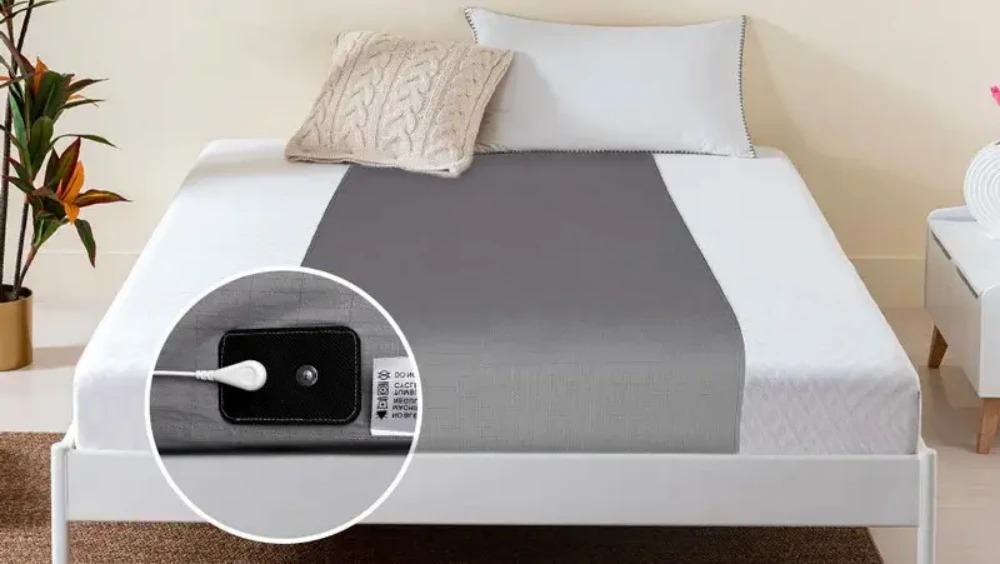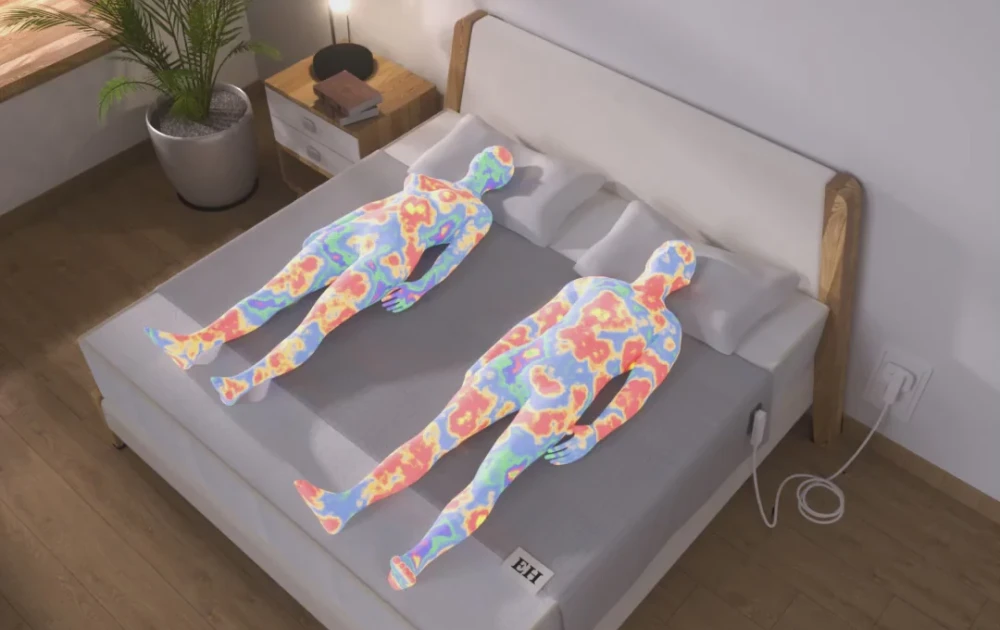If you’ve been hearing a lot about grounding lately (also known as earthing), you’re probably curious about grounding sheets and how they’re supposed to help with better sleep and overall health. These sheets are designed to connect your body to the Earth’s natural energy, which is said to help with things like reducing inflammation, improving sleep, and boosting your overall well-being.
But here’s the big question: Can you wear pajamas to bed while using grounding sheets, or will that mess with the benefits? Good news—you absolutely can! But there are a few things to consider. Grounding sheets work best when your skin is in direct contact with them, so wearing pajamas won’t completely block the benefits.
Just be mindful of the fabric—synthetic materials can interfere with the grounding process. So, if you’re aiming to get the most out of your grounding sheets, go for natural fabrics and keep some skin exposed to the Earth’s energy while you sleep.
What Are Grounding Sheets?

Grounding sheets are a super easy way to tap into the Earth’s natural energy while you sleep—no need to head outside! These sheets are woven with conductive materials like silver threads. When you lie on them, the silver helps your body stay connected to the Earth’s electrical charge.
You simply plug the sheet into a grounded outlet, and voilà, it’s working while you snooze. This connection is said to help with things like reducing inflammation, improving sleep, and just making you feel better overall.
Can You Wear Pajamas With Grounding Sheets?

You might be wondering if wearing pajamas with your grounding sheets will affect how well they work—and the answer is: it depends!
Grounding works best when your skin has direct contact with the Earth’s energy, and your clothes play a role in that. If your pajamas are too thick or made from synthetic materials, they can reduce conductivity and prevent your grounding sheets from doing their thing. It’s like trying to touch the ground through a thick blanket—it’s just not as effective!
Factors Affecting Grounding Effectiveness with Pajamas
When you’re using grounding sheets, a few factors can make a difference in how well they work—especially when you’re wearing pajamas. If you’re curious about how your pajama choice impacts the grounding process, let’s break it down into some simple points that will help you get the most out of your sleep routine.
1. Fabric Type
Natural fibers vs synthetic fibers:
Fabric choice really does matter when it comes to grounding. Natural fibers like cotton, linen, and silk are way more conductive than synthetic ones like polyester and nylon. This is because natural fabrics allow electrical charges to flow more freely, which is exactly what you want for grounding. So, if you want your grounding sheets to do their magic, go for breathable, natural fabrics for your pajamas.
Pajama materials and conductivity:
Cotton is an absolute winner when it comes to grounding because it’s soft, breathable, and lets the energy flow through easily. Linen is another great choice since it’s lightweight and naturally conductive.
On the other hand, synthetic fabrics like polyester or nylon are less effective for grounding because they can block the energy. So, if you want to make the most of your grounding sheets, invest in natural fiber pajamas!
2. Fit and Contact
Impact of the snugness of pajamas
The fit of your pajamas plays a role in how well your body connects with the grounding sheets. If your pajamas are too loose, they could create a gap between your skin and the sheet, making it less effective. But if they’re too tight, they might restrict skin contact, which is key for grounding to work. You’ll want something that’s comfortable—not too loose, not too tight!
The role of skin contact
Grounding works best when your skin is directly in contact with the sheet. The more skin you expose to the sheet, the better the grounding process will be. So, when you pick your pajamas, think about how they allow for skin contact. Even if your pajamas are made of natural fibers, they won’t be as effective if they cover too much of your body or stop your skin from touching the sheet.
Moisture Levels
Importance of keeping the skin slightly moist
A bit of moisture helps the energy flow more easily between your body and the Earth’s electrical charge. If your skin is too dry, it might reduce the conductivity and impact how well the sheets work. A light mist of water or just natural moisture can make a big difference here!
How Lotions, Oils, and Dry Skin Affect Grounding
While moisturizing is great for your skin, be careful with thick lotions or oils right before bed, as they can block the conductivity by acting as a barrier between your skin and the grounding sheet. If you’re using grounding sheets, try to avoid slathering on heavy creams or oils before you lie down, or at least make sure your skin is clean and free from any products that could get in the way.
Best Pajama Fabrics for Grounding Sheets
Natural Fabrics
Cotton: Cotton’s one of the top choices when it comes to grounding sheets. It’s breathable and lightweight, which means it lets electrical charges flow easily from your skin to the sheet. Plus, it’s soft and comfy, so you’ll be able to sleep soundly while staying connected to the Earth’s energy.
Linen: Linen is another solid pick for grounding pajamas. Just like cotton, it’s naturally conductive, so it helps keep you grounded. It’s also super lightweight and breathable, which is great for staying cool. So, if you’re looking for a comfy, airy feel during your grounding sessions, linen’s a great way to go.
Bamboo: Bamboo fabric is a fantastic alternative to cotton. It’s naturally breathable and hypoallergenic, which makes it ideal for grounding sheets. Bamboo’s also great for moisture-wicking, so it’ll keep you dry and comfy all night. Plus, it’s eco-friendly, so you get the added bonus of being kind to the planet while reaping the benefits of grounding.
Synthetic Fabrics
Fabrics like polyester and nylon are made from synthetic fibers, and unfortunately, they don’t allow electrical charges to pass through as well as natural materials do. These fabrics can act as a barrier, preventing your body from connecting with the Earth’s energy. So, while they might feel cozy, they’re not the best for grounding.
If you’re someone who loves the feel of synthetic fabrics, don’t worry! You don’t have to ditch them entirely. One easy fix is to wear natural fiber layers underneath your synthetic pajamas. For example, a cotton or bamboo tank or underwear can help keep your skin in contact with the grounding sheet.
Or, if you’re all about comfort, consider adding a grounding pillowcase or mattress topper to help maintain your connection to the Earth, even if your pajamas are made of synthetic materials.
Can You Use Pajamas with Other Grounding Products?
If you’ve been diving into the world of grounding products, you might be wondering if your pajamas will work with other grounding tools like mats, wristbands, or socks. Let’s break it down so you can get the most out of your grounding routine—by understanding how these products work together and what fabrics are best to wear when using them.
Can You Use Pajamas with Grounding Mats?

Grounding mats and grounding sheets both connect you to the Earth’s natural energy, but in slightly different ways. A grounding mat is often used when you’re sitting or working, while a grounding sheet is meant for sleeping.
Both transfer the Earth’s energy to you, but with a mat, you’re usually making contact with your hands or feet. If your pajamas aren’t made from natural fabrics or are a bit loose, they won’t block your connection much—but the best way to experience grounding is to have your skin in direct contact with the mat for optimal results.
Can You Use Pajamas with Wristbands?
The same principle applies when using wristbands or socks. Natural fabrics—like cotton, linen, or bamboo—work best because they help with conductivity. Synthetic materials, on the other hand, can reduce grounding effectiveness.
If you enjoy the softness of synthetic fabrics, no worries! Just wear a thin layer of natural fibers, like cotton or bamboo, under your wristbands or socks to ensure your skin is still able to connect with the Earth’s energy.
Can You Use Multiple Grounding Products at Once?
Yes, you can absolutely use more than one grounding product! In fact, combining them can enhance your grounding experience. You might sleep on a grounding sheet while also using a grounding mat at your desk, or wear a wristband throughout the day.
This way, your body stays grounded for longer periods, and the benefits can extend well beyond just sleep. Just remember, the key to effective grounding is ensuring your skin remains in direct contact with the grounding surface.
Are Grounding Sheets More Effective With Other Products?
Yes, grounding sheets can be even more effective when paired with other products like mats or wristbands. While grounding sheets help connect you to the Earth while you sleep, using a mat during the day or wearing a wristband ensures that you’re grounded all day long. This extended contact with Earth’s energy can help improve sleep, reduce inflammation, and boost your overall well-being.
How to Maximize the Benefits of Grounding Sheets With Pajamas?
If you’re looking to get the most out of your grounding sheets, the pajamas you wear can make a world of difference. Grounding sheets are great for connecting to the Earth’s energy, but they really work their magic when paired with the right sleepwear. Let’s dive into how you can make sure your pajamas help maximize the benefits of grounding.
1. Opt for Natural Fabrics
The fabric you wear plays a huge role in how well your grounding sheets work. Natural fibers like cotton, linen, and bamboo are the best options because they allow electrical charges to flow easily between your body and the sheet. This helps you stay connected to the Earth’s energy while you sleep.
When shopping for pajamas, check the fabric labels and aim for ones that are made mostly of natural materials (ideally at least 95%). Whether you choose soft cotton or a breathable bamboo set, natural fabrics will ensure you’re getting the most from your grounding sheets.
2. Ensure Skin Exposure
For grounding to be effective, your skin needs to be in direct contact with the sheet. The more skin you can expose, the better the connection. Focus on areas like your feet or hands, since these are the easiest to leave uncovered.
If you like wearing more clothes to bed, try to keep those key areas (like your feet or hands) exposed. Even if you prefer long sleeves or pants, make sure at least one part of your body is touching the grounding sheet. That direct contact is essential for full grounding benefits.
3. Avoid Thick Layers of Clothing
While it’s tempting to bundle up in cozy layers for a comfy night’s sleep, thick pajamas or multiple layers can block the energy flow from your grounding sheet. Fabrics like flannel or heavy cotton can reduce grounding effectiveness by creating a barrier between your skin and the sheet.
If you prefer more coverage, go for lightweight and breathable fabrics like thin cotton or linen instead. These will still keep you warm but won’t get in the way of your grounding session.
4. Keep Synthetic Blends to a Minimum
Even a little bit of synthetic fiber can mess with the grounding process. Fabrics like polyester or nylon don’t conduct electricity the way natural fibers do, which can reduce the effectiveness of your grounding sheets.
When shopping for pajamas, look for ones made from 100% cotton, linen, or bamboo. If you can’t completely avoid synthetic fabrics, just make sure they don’t make up the bulk of your pajamas—especially the parts closest to the sheet.
Things to Consider Before Using Grounding Sheets
Health Conditions & Preferences for Grounding Products
Grounding sheets can be super beneficial for a lot of people, but if you have any health conditions, it’s always a good idea to check with your doctor first. For those with chronic issues or on medication, it’s worth getting some advice on how grounding might affect you.
Your personal preferences matter too—if you’re someone who runs hot at night or likes extra coverage while you sleep, make sure the grounding sheet and pajamas you choose keep you comfy. Grounding sheets can help with sleep and overall well-being, but everyone’s body is different, so listen to what works for you!
Check Grounding Sheet Quality & Materials
Not all grounding sheets are the same, so make sure you’re picking one that’s made with the right materials. Look for sheets that use conductive materials like silver or carbon for the best results. You also want your grounding sheet to be durable, so it’s important to pick one that’ll hold up over time.
And don’t forget about the fabric! Natural fabrics like cotton or bamboo are the way to go for both your pajamas and the grounding sheet—they help keep the connection strong between your skin and the sheet.
Grounding Science: When to See Results
You’re probably wondering how long it’ll take before you start feeling the benefits of grounding. Some people feel more relaxed or notice better sleep the very first night, but for others, it takes a little longer.
Grounding works by reconnecting your body to the Earth’s energy, so it can take a few days (or even weeks) to notice changes like better sleep, less stress, or reduced inflammation. The key is to stick with it—don’t expect instant results, but be patient, and over time, you’ll likely see some great benefits.
Conclusion
Yes, you absolutely can wear pajamas with grounding sheets! The trick is picking the right ones. Stick with natural fabrics like cotton or bamboo, make sure your skin touches the sheet directly, and avoid heavy layers that might block the energy. The better your pajamas, the better your grounding experience. Don’t be afraid to try different sleepwear options until you find what works best for you.
Looking to boost your grounding game? Check out high-quality, grounding-friendly pajamas from Friendtex. Perfect for comfort and conductivity—your body will thank you!


